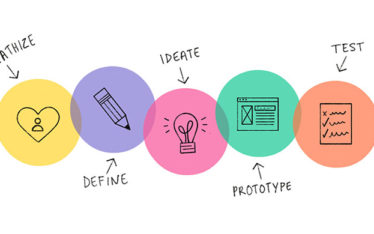“Once I am up and selling I will start investing in branding..” Sound similar? “Over the last 11 year I have come across many owners who consider branding as the second stage of their business. But saving time at the moment and ignoring your brand identity only cause more headaches in long run. Also the process of brand creation helps you to achieve clarity and focus your marketing efforts right from Day 1.. ” Himani Joshi : Founder Creative Studio We are listing 25 steps that will help you to DYI your branding in the early days. Feel free to Connect To Us To Know More if you need help anywhere. We advise you to do them in the same sequence for optimized results. 1) Have patience as the branding process takes time: 2) Budget your brand: From making a logo to running a ad anything and everything has a price. So before dipping, your feet in the world of brands get a wide knowledge of budgets and which budget gives you what. “Yes, I want a website for 999…” But what is the difference between a website that cost 999 and a website that cost 99999.. It is not the same! 3) Do a perception audit before starting a Branding Process: It means understanding how people feel about the service or product you are selling or about to sell. The best way is to take a few interviews with people who seem like your target customers. 4) Identify what emotions your audience will interact with: Jot down the right connection, understand who is your target audience and the emotions to which they respond. This will help you in digital marketing as well as planning customer communication at every step 5) Do a competitor’s analysis: One of the best ways we recommend is perpetual mapping. Choose the two most important aspects of your brand and place the brands available in the 4 grids. This will help you to identify the direct competition in the aspirational competition. Also when you are preparing your marketing content you can look into the communication strategy of the aspirational brands to level up your game! 6) Identify the pain points of your clients: If you want the brand to survive long term. Understand what your clients are struggling with? And then find a solution under your brand. Don’t leave this part to your perception, talk to your target customer before you come to conclusions – Trust us, you will be pleasantly surprised by others’ points of view. 7) Figure out the key unique qualities of your brand: Know the unique qualities of the product and services. Discovering and stating the best 3 things about your brand becomes the base of your communication strategy. You do not need a list of 20 for sure! 8)Develop a buyer persona: Segregate clients according to their needs. Also in terms of location, age and purchasing power of your products and services. 9) Identify the touch points of your customers: Dont choose your communication channel, just because it is an option, which other brands are using. Not everyone is on Facebook, and there are people who use youtube as a search engine. 10) Develop a clear value proposition, mission, vision: A brand should have core values that should be imbibed whenever it delivers its promises. Having a mission and vision helps you and your team to work cohesively every day. 11) Have a Brand Voice: Your brand should have a tone, is it subtle, powerful or mild? And it should be based on the products and services. Just like the personality of a close friend or acquaintance, a compelling brand voice feels as unique as the business it belongs to. 12) Have brand colors matching your Brand personality: 90% of a product assessment is based on colors alone, so it’s important to get your brand palette right. Make sure you are following this across all your customer touch points. 13) Have a Brand story that has a hero, a plot, action, and a solution to their problem: Having a short crisp compelling story about the company, makes the brand more vivid and unique. Remember people connect with people – Humanize Your Brand. 14) Understand the Dos and Don’t of the logo usage: Logo is just a chapter of the great novel called brand but it is an important one! It is important to know where to use the logo and in which format. Take help of a designer to visualize and standardize usage guidelines. 15) Use consistent vocabulary in branding content: The vocabulary used in the brand messages, email signatures, letters, and other visual content should be aligned to the vision. 16) Identify the necessary marketing collaterals as per your business: You might require different kinds of collateral as your business grows, but making a basic list and seating its formats in an easily editable version will help you. Next time an interested client asks to send a brochure or send a company info deck you will not be wondering how to make it in the middle of the night. One of the best ways is a google presentation. Develop them based on your brand colors and use the same every time. 17) Register domain name: Even if today you are not making your website when you are finalizing your brand name make sure to check online and purchase the identity. 18) Create fresh content and don’t forget to refurbish it: Generate content with which your audience will interact, Also keep in mind that unique and valuable content is good for SEO, This will boost your brand awareness. Also, don’t forget to refurbish your content in different ways. For example – A blog like this will get converted into the LinkedIn blog, stories on Instagram, and even youtube videos 19) Integrate brand into every aspect of your business: It is important that the brand personality is reflected in all aspects. Websites, apps, social media, packaging, etc.. If you are building a brand you are offering an experience that can be replicated again and again so that every time the same joy is experienced by your customer. This is what leads to brand loyalty eventually. 20) Live up to the brand promise: Branding helps you to create awareness but make a genuine and achievable promise which you can practically deliver. 21) You are your own promoter of your brand: This is valid, especially for solopreneurs. It’s time to shell off and be loud and vocal about your brand. Be authentic and provide value. 22) Facilitate communication about your Brand among your employees: No matter what is the size of your team Employees must have the right knowledge of your brand. If there is any change, keep updating your employees 23) Keep on monitoring and measuring your brand image Internally and externally: It is vital to monitor how the brand is performing. Setting up measuring systems is important to understand growth. Only measuring every month’s turnover is not the solution. Look for metrics like – no of queries you receive, and conversion rate. No of people you are reaching digitally, traffic on your social channels etc. 24) Keep adapting to the changing environment: It is important to adapt to the changing needs of the users. Keep a wider eye. Eg: I am a spices brand I provide unique combinations and spices this year I modifies my packaging and made it biodegradable. 25) Be consistent: From communication to your presence and style, consistency gives you visibility, and recall value and helps you call your business a “Brand” Our last piece of advice is to Have fun building your brand. After all, this is a creative process and while every experiment may not work, you can always learn to improve. Good luck, and happy branding.So where do you start?
25 Best Practices for Branding Your Business



